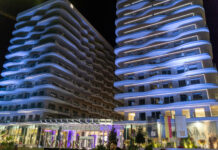Despite how dangerous they are, phishing and scam emails are extremely common and you need to make sure you’re protecting your B&B business from the risk they pose.
Have you ever had an email from someone asking you to click a link or provide certain sensitive information in a slightly unorthodox or unexpected manner? If the answer is yes, you’ve probably been targeted by a phishing email.
Phishing is not be confused with a blatant scam which should be much easier to spot. If Prince Albert or similar is saying you’re part of a long lost estate worth millions and all he needs is your payment details to transfer the money… it’s probably not true!
Phishing emails will pose as a trusted source or even someone you know and will try to convince you to take an action via a link or attachment. Usually the link will either infect your computer with a virus or malware like a Trojan Horse, or it will navigate to a false page asking for private information. It could be that the email is asking you to change your password, update your details, or confirm your identity etc.
Sometimes even the most savvy tech operators can be fooled by phishing emails so it’s important you know how to spot them and protect your valuable data…
Always double-check before clicking a link
Since phishing emails will pose as someone you know, it can be easy to trust them. Sometimes they’ll even take over a legitimate email address, making it perfectly natural not to suspect them.
However, you need to think about the context of what you’re being sent. Would your mother ordinarily send a random link? Does it make sense an account you haven’t had contact with in years is now emailing you? Did you ever even have a password with the company that’s asking you to update it?
You can also simply hover over the url and if the web address is suspicious or doesn’t make sense, leave it alone. If in any doubt, it’s obviously safer not to click the link and delete the email.
Check the source of the email
Often there’ll be a clue that something isn’t right when you look closely at the email address of the sender. At first glance you might be fooled but if you check twice it’s likely a letter will be missing or a number is added to make it different. Sometimes it may just be gibberish.
Don’t trust any email address with with errors or any that you haven’t seen before. If they are coming from someone close to you, you can always reach out to them and confirm if they sent you an email or not.
Remember some important safeguards
There’s a whole range of preventative measures you can take to avoiding phishing emails. They range from simply grammar checking (phishing emails are often error-strewn) to more hardcore solutions. Some advice includes:
- Ensuring anti-spyware, anti-virus, and anti-malware tools are installed and up-to-date on your systems
- Make sure all your applications are regularly updated
- Run an education session for everyone who uses the email address
- Don’t be panicked by a sense of urgency, always test links and attachments before opening them
- Be wary of fake login screens
- Be careful about what sites you browse and where you give away information
Phishing scams are getting smarter all the time. They’re more targeted and more personal so it’s more important than ever to be vigilant.






























